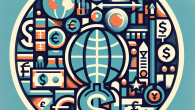
Macroeconomic Stability in Low-Income Countries: What We’re Still Getting Wrong
The Shadows of Inflation: Decoding the Global Policy Labyrinth
Ah, inflation—the economic specter that haunts central bankers, rattles investors, and makes your grocery bill feel like a treacherous riddle from medieval times. I’m Dr. Alistair P. Whitmore, a somewhat unflappably British economist with a penchant for classical economic theory and a healthy disdain for euphemisms like “transitory price pressures.” Today, we take a brisk walk through the foggy woods of inflation and global monetary policy, deciphering how nations are responding—or fumbling—in this high-stakes macroeconomic opera.
Understanding Inflation: Not Just Expensive Avocados
Let’s begin by restoring dignity to the term “inflation.” At its core, inflation is the general increase in prices across an economy over a sustained period. When you notice your morning coffee costs more than your childhood memories of lunch money, you’re feeling inflation.
But there are layers—like a well-baked mille-feuille. Consider:
- Demand-pull inflation: Too many dollars chasing too few goods. Picture post-lockdown euphoria in 2021.
- Cost-push inflation: Rising production costs, often due to supply chain bottlenecks or geopolitical disturbances (hello, Ukraine).
- Built-in inflation: The wage-price spiral where workers demand higher wages to match rising costs, which in turn drives costs higher still.
In 2022 and 2023, we had a delightful cocktail of all three. Central banks, of course, scrambled to respond. But did they succeed? Well, let’s lift the lid.
The U.S. Federal Reserve: Hawkish Ballet with a Side of Jitters
The Federal Reserve, under Jerome Powell’s cautious yet firm hand, executed the most aggressive rate hike campaign since Paul Volcker wore gold-rimmed spectacles back in the 1980s. Starting in March 2022, the Fed raised rates at a blistering pace, peaking near the 5% mark in under a year.
Did It Work?
To some extent, yes. Headline inflation in the U.S. began to subside in 2023, dropping from its June 2022 peak of 9.1% to more manageable levels below 4%. But like a stubborn barbecue stain on a silk tie, core inflation (excluding food and energy) proved more resistant.
The key challenge now? The “last mile” of inflation control. Slower disinflation combined with strong labor markets puts the Fed in a delicate dance—raise rates further and risk a recession, or pause prematurely and let inflation re-erupt.
Europe: Unified in Currency, Divided in Complexity
The European Central Bank (ECB) faced a particularly European dilemma—how to address inflation across a mix of 20 economies, each with different fiscal conditions, productivity levels, and levels of exposure to Russian energy.
The ECB’s Calculated Response
Christine Lagarde, cool as always, dragged rates up from -0.5% in mid-2022 to a landmark 4.0% by late 2023. Germany grumbled about inflation while Italy worried about ballooning debt servicing costs. Typical dinner party fare in Frankfurt.
The ECB adopted a dual-pronged approach:
- Tighten monetary policy to control inflation.
- Create financial instruments (Transmission Protection Instrument) to prevent too much harm to debt-laden member states.
In essence: fight inflation, but gently pet peripheral markets so they don’t have a tantrum. Bravo, Europe.
Emerging Markets: Between a Rock and Dollar
Emerging economies had it rough. They faced imported inflation due to high global commodity prices and a strengthening U.S. dollar thanks to Fed tightening. Add to that local supply shocks, political instability, and weaker currencies—and voilà, macroeconomic heartburn.
Notable Strategies Worth Applause
Some emerging markets were surprisingly proactive. Take Brazil for instance—its central bank began raising rates in early 2021, well ahead of the Fed. The Selic rate rose aggressively, peaking at over 13%, which helped tame inflation without crushing growth entirely. Bravíssimo!
Others, however, took delayed action or fell prey to political interference (Turkey, we’re looking at you). When rate cuts are dictated by autocrats rather than inflation models, the outcomes are predictably chaotic—currency crises, capital flight, and central bankers resigning in exhausted despair.
The Quiet Impact of China (Yes, Still Relevant)
While much of the inflation drama took center stage in the West, China’s disinflation—or deflationary tendencies—posed its own risks to global markets. The long-term effects of COVID-zero policies, a burst property bubble, and tepid domestic demand constrained global recovery momentum.
China’s stimulus has been targeted and moderate, avoiding the “bazooka” approach favored by the West. But its role as a global deflationary force is no longer guaranteed. Watch this space: if China’s recovery accelerates, it could swing commodity prices—and global inflation—once more.
Inflation Outlook: What Lies Ahead?
Despite some progress, inflation’s full retreat is far from certain. The following elements deserve keen attention:
- Sticky wages: Labor markets remain tight, especially in services.
- Energy volatility: Geopolitical tensions can spark short-term price spikes.
- Policy lag: Monetary policy operates with a delay—today’s hikes inform tomorrow’s data.
- De-globalization trends: Changing trade dynamics and nearshoring could raise structural costs.
Indeed, we may be moving from a low inflation regime to one with moderately higher and more volatile inflation—not alarming per se, but certainly less convenient than what investors grew accustomed to in the pre-pandemic 2010s.
Final Thoughts from an Old Macroeconomic Soul
Policy, like fine tea, takes time to steep. Central banks all over the world have taken bold steps, but navigating out of this inflationary episode will require finesse, flexibility, and the occasional humility to admit misjudgment.
If there’s a silver lining, it’s this: the global financial system, while fragile, has proven resilient. Central bank credibility remains largely intact. And investors? Well, you’ve earned your macroeconomics degree the hard way. Congratulations.
Until next time, keep your spreadsheets balanced and your forecasts conservative.
Looking to explore more about our approach and philosophy? Visit our About Us page. Questions or comments? Reach out through our Contact page.









Leave a Reply